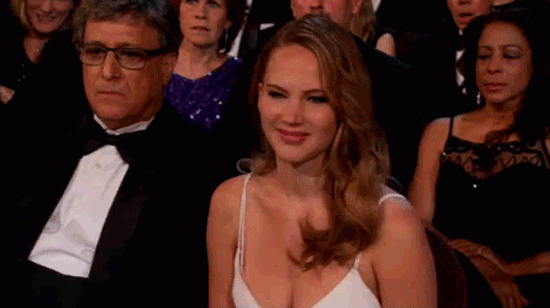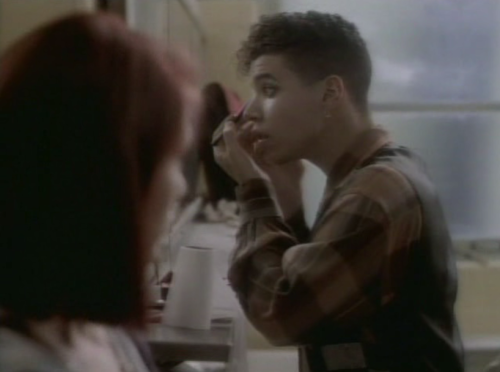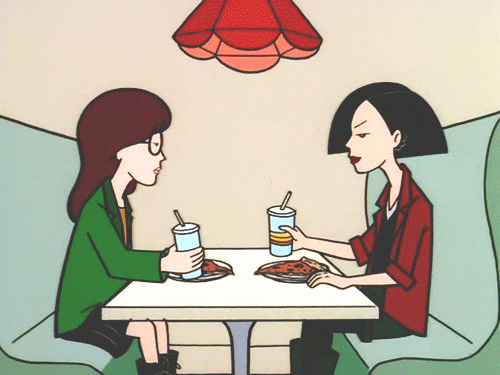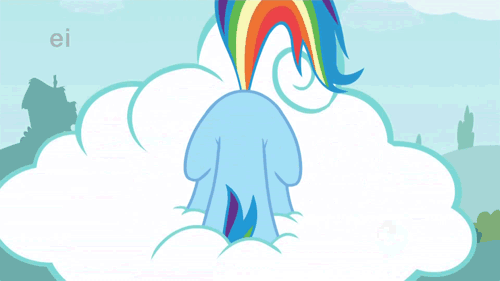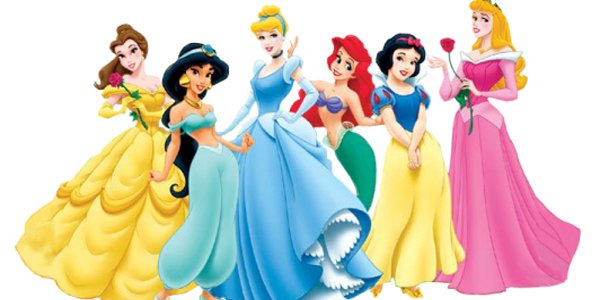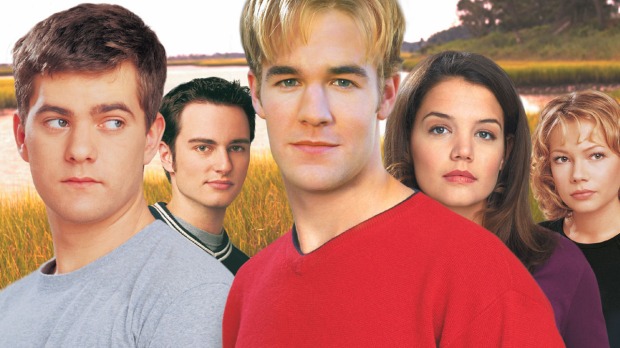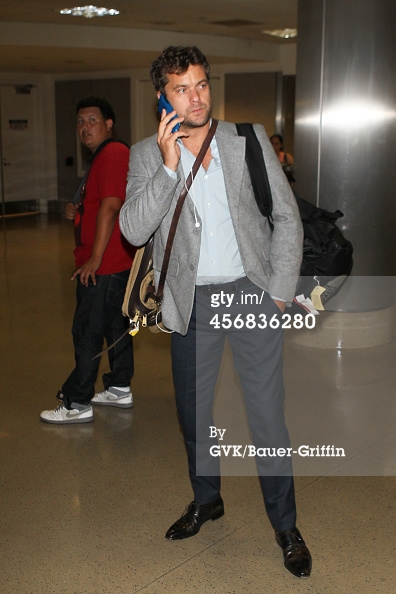No, Ricki. No, you don’t. You don’t have to do anything. You’re just going to.
So this is up over at nerve.com, which, last time I checked, basically had personals and dirty pictures and stories, but, you know, hipster-classy dirty pictures and stories. Then again, it’s been a while.
And of course there’s no way I’m not going to respond to it.
So I generally agree with the list as it’s presented. But I’m having a little trouble with the premise. In the beginning of the piece, Sonya Saraiya says, “Disney princesses for the most part, are not [feminist (in comparison with Merida, of Pixar’s new Brave]. Most need to be rescued by their male love interest; almost all Disney Princess movies end in marriage or engagement.” This is a popular way of posing questions about the feminist virtue of a particular text, and I don’t like it. And sure, I have a personal stake here – I write romances; I am a feminist; I think I can write feminist-friendly romance. But stake aside, I still think I’m right.
I mean, first of all, most of the world wants love. Feminists, non-feminists, men, women – it’s right there with food and shelter for most of us. Declaring that wanting love is un-feminist (if the object of your love is a man and you are a woman) is destructive to feminism.
And because most of the people who have ever lived in the world ever want love, we’ve been telling stories about wanting love forever. Lots of stories. I think if you compiled all the stories about love that have been told since the world began, and then all the stories about death, love would win. Especially since love has the powerhouse romance novel publishing sector backing it up.
Sure, it would be nice if Disney told more stories that were marketed for girls that didn’t feature love as a main theme. Woody and Buzz fall in love, but it’s not their main plot. Nemo doesnt fall in love, and neither does his dad. Remy the rat in Ratatouille doesn’t fall in love (although his human does). The Incredibles are already a family; there’s no love plot there. So yeah, it’d be nice to see stories with female main characters that had little to nothing to do with love. But I don’t think it’d be a problem to still have romances, if they were mixed with some other things.
Finally, it’s important to note that, when these stories end in marriage and/or engagement, a man is getting married or engaged, too. And while the princes of Cinderella and Snow White aren’t fully realized characters with fully realized facial features, the later movies have guys who are fully realized and also decided that the most important thing to them is the pursuit of love. So it’s not just the girls doing it.
So here’s her rankings and what I think of them.
10. Sleeping Beauty
She puts Sleeping Beauty last. I don’t have a big problem with this. Sleeping Beauty is one of the old-school ones, and Aurora does not have much agency, and mostly she dances in the forest with some dude and then falls asleep while he rescues her.
But.
Saraiya is only ranking the princesses, sure, but as an overall movie, the people in this one with the most power, the most agency, the ones who do the most stuff to forward the plot, are the three good fairies. Prince Phillip can only come to the rescue and do stuff because they basically do it for him. They figure out that he’s the one whose kiss can wake her. They break him out of the evil fairy’s dungeon and then defend him against the evil fairy’s minions by turning all the evil minions’ weaponry into, like, flowers and stuff (because they can only use their magic to do nice things that bring happiness) so that he can run away safely. And then they create for him an unbeatable sword with which he defeats the dragon/evil fairy.
I mean, sure, the evil fairy is a woman, too, and she’s mean and has no seeming motivation (in the originals as well as the Disney version) other than “Didn’t get invited to party. Bitches gonna suffer.” Which sounds dumb except I totally know people like that.
But that means basically all of the people in this movie who act, who have agency, who forward goals and make plans and do stuff, are women. They’re just not the titular character. (They’re also old and/or asexual, which, again, is a whole other post. Or, I don’t know, dissertation. Which someone’s probably already written.)
9. Snow White
I hate this movie. I hate her voice. It grates on my nerves so much. Plus why does she look like a child? And then my daughter’s got this Snow White night(ing) gown/costume thing that looks like Snow White’s outfit, with a picture of Snow White on the chest, and that picture of Snow White is giving this seriously come-hither look, like, why, why, on a children’s item, is a woman making a face like that, and, umm . . . what were we talking about?
Oh, yeah, where ought it rank on the feminist scale?
I don’t care. I hate this movie. Put it right down at the bottom. It’s fine by me.
8. Cinderella
So this is your classic helpless-girl-rescued-by-wealthy-dude story. But for some reason, it doesn’t bother me that much. I mean, yeah, Cinderella’s principle characteristic is that she’s nice. And yeah, she marries a guy she danced with for five seconds because it’s true love.
But here’s the thing about that. I don’t mean to slam anyone’s generation or anything, but sometimes I hear stories or see things from, you know, back in the day (Cinderella came out in 1950; Sleeping Beauty was 1959) and I get the feeling that it would have seemed utterly reasonable to the writers and artists over at Disney, male and female, that you know, you meet someone, you dance with them, you’re attracted, so yeah, let’s get married! I mean, not all the time, obviously. But I think we’ve gotten a lot more obsessive and analytical, as a culture, about what love is and who we ought to be with and stuff. For better or worse.
Also, I’d like to note, that while yes, marriage to the prince means that Cinderella doesn’t have to be a servant to her nasty step-family anymore, the prince doesn’t, like, actively rescue her. He doesn’t even come over himself to find the girl who fits the shoe, which is always the oddest bit of storytelling to me (in all the versions of “Cinderella”), because seriously, wouldn’t it be best to have the prince, who’s stared at her face for at least one full waltz, to come on this mission? What if her feet had been swollen from dancing all night? What if some other chick had had the same shoe size?
But anyway, he’s not trying to rescue her through marriage. He just wants to marry her because they danced and she was pretty and it was romantic. The ones who really rescue Cinderella are the mice, because they’re the ones who get Cinderella the key when her stepmom locks her in the attic to prevent her from trying on the shoe. And, yeah, they’re male mice. But they are obviously not her love interest.
I’m not objecting to Cinderella’s placement on this list. Just making some points.
7. The Little Mermaid
Oy, here we go again.
There are many problems with Ariel. She’s way too young, and she’s immature and impulsive and kind of dumb sometimes. She’s rebelling against her dad. She’s fetishizing human-ness and falling in love with the first dude she meets who has legs.
But I don’t think she’s particularly un-feminist. Or, at least, I think the problems in this movie aren’t coming specifically from a lack of feminism.
Saraiya mentions that thing that always makes me nuts about mentions of this movie from a feminist angle, that she gives up her voice to land a man. I’ve made this point before, but I’ll make it again. I posit that a) she doesn’t give up her voice to land a man; she gives up her voice to get legs. She wants to be human. Before she meets Eric, she shows us how obsessed she is with humanity and how badly she wants to be “Part of Their World”. Then she only goes to the sea witch, not after meeting Eric, but after her daddy destroys all her human stuff. Being human, sticking it to her mean daddy, these are all much clearer and stronger motivations for her actions than wanting to land a man. Also, b) she doesn’t think she’s giving it up permanently. It’s for three days. I’d give up my voice for three days if doing so would allow me to fulfill a lifelong dream. Hell, I’d give up my voice for three days if it’d get me a table at Next. (And, when I was a child, I would definitely, definitely have given up my voice for three days in exchange for fins.) Finally, c) she gets the idea to give up her voice to land a man from the villain, who’s tricking her into it for her own nefarious purposes. The movie is not suggesting it’s a good idea to give up your voice to land a man. The movie is suggesting it’s an idiotic, impulsive idea, and then shows us that Eric is reluctant to acknowledge the feelings he’s developing for Ariel specifically because of her lack of voice.
Anyway, yeah, she gets rescued by Eric, who stabs the villain in the stomach with a broken piece of wood on his ship. Wow, I just realized how Freudian these things can get sometimes. Anyway, I guess that’s un-feminist. Ariel is sort of ineffectual in battle.
I just think there are other problems with this character that are not related to how feminist she is.
6. Beauty and the Beast
So the thing leveled at Belle most of the time is that she’s got Stockholm Syndrome, falling for her captor. And that’s legitimate to a point, but it’s worth noting that she doesn’t start falling for him until he shows her that he can be kind. She doesn’t think she can change him; she sees him change and then decides she might give him a chance.
There’s also the way Disney pumped this as a “We’re showing that you can love an ugly person, and that a pretty person can be evil, so it’s feminist!” movie, but the good ugly person and the bad pretty person were still dudes. You still have to be pretty if you’re a girl. So pretty that the most sought-after guy in town is determined to marry you no matter how much you offend him and how weird he thinks you are.
My mom has also complained that Belle declares her desire for “adventure in the great wide somewhere,” but then settles for life as a princess in a castle a few hours’ drive from that “poor, provincial town” she was so longing to get out of.
I posit that maybe falling in love with a beast in an enchanted castle counts as an adventure?
And we don’t really know what happened after the story ended? Maybe the Prince formerly known as Beast decided he, also, wanted to get the f out of the castle he’d been trapped in for ten years and they went on adventures together?
I’m ret-conning, I know. Sorry.
5. Aladdin
Saraiya likes Jasmine. So do I. I do want to point out, this isn’t her movie; she’s the secondary character. It’s Aladdin’s movie. But she’s got sass. She’s resisting her narrow choices, just like Belle was doing. And I personally love how quickly she picks up on Aladdin’s well-honed tricksterisms, either using them in tandem with him (like when she picks up super quick on how to fake her way out of the stealing-an-apple incident) or to catch him out in a lie (like when she pointedly trips him up with a question about Abu). Saraiya complains that her power, in the end, lies in her sexuality, because her big rescuing action is to pretend to seduce the bad guy for a minute there, but concedes that, hey, sometimes a girl’s gotta do what a girl’s gotta do with her God-given ridiculous waist-to-hip ratio and crazy thick hair. I also don’t like how she’s bad-ass right up to the moment she decides she loves Aladdin, and then she immediately becomes simpering when not silent. But, you know. It’s not her movie, it’s his. And he gets rescued from his life of poverty through marriage to a princess. So, you know.
4. Tangled
She is super naive and childlike, which can be grating. To me, anyway. Other than that, she’s not bad. She’s got a goal that does not have to do with getting married and she pursues it with as much sass and guile and strength and determination as one could wish. Along the way she falls in love, and really, who could blame her? Flynn Rider is adorbs. She wields a cast iron pan and her miles of hair with panache. I do find her to be excessively wide-eyed, but, you know. Not the worst crime a Disney princess could commit.
I also enjoy how, after watching Aurora and Ariel get married at sixteen, and Jasmine I think is supposed to be eighteen, though I have no evidence, they make a really big deal of the fact that Rapunzel, who turns eighteen in the course of the movie, does not actually marry the love interest for years. And years. And years.
3. The Princess and the Frog
See, now, in this movie, they both have to learn that love is worth pursuing, either in addition to (although possibly at the expense of) your dream career, in her case (and she has a dream career! That is exciting for a Disney princess!), or instead of pursuing a life of wasteful leisure, in his. I’m down with that.
She does, in the end, have her dream saved by his family’s wealth and her new alligator friend’s brawn. Actually, my favorite commentary on this movie comes from the folks over at The Editing Room, who have this to say:
Well, that’s a fine message to be sending to the kids: idealism and hard work is [sic] fine and all, but money and muscle win every time. (pause) Wait a minute, that’s actually an EXCELLENT lesson. Holy shit, I think Disney accidentally made their best movie ever!
2. Pocahantas
See, I think she’s giving this movie a pass because the girl doesn’t end up marrying the guy. I think Tangled and The Princess and the Frog should have been ranked higher than it. But possibly that’s because I think it’s a bad movie. By that I mean, it’s not very well-written or well-plotted; the history is god-awful; the whole noble-savage fetishization is uncomfortable; the music has its moments but is kind of dull; the characters are flat and boring, and one of them is voiced by Mel Gibson. So I don’t think the principle problems with this movie are feminist problems. But I also don’t think there’s anything especially feminist about it, beyond the nineties-standard doesn’t-want-the-life-her-father-planned, a trait shared by the much lower-ranked Belle and Ariel and Jasmine, unless you’re willing to count that she doesn’t marry the dude in the end, which, as I said above, in a rather long-winded way, you really shouldn’t be.
1. Mulan
Well, duh. I mean, Disney intended this to be their super-duper-feminist-pleaser. And one could argue about how she’s really doing this all for the honor of her father but, come on! She saves China! Twice!
It should be pointed out that neither Pocahantas nor Mulan are usually included in the Disney Princess stuff. There are two different sets of Disney Princess figurines; one of them has Mulan and one has Pocahantas. Both of them have all the others, except Rapunzel, because Tangled was still being marketed separately when those figurines came out. But they aren’t in the coloring books and I don’t think they have all the paraphernalia that the other princesses have. I mean, there are dolls and costumes but not, I think, cups and lunch boxes and whatnot.
Actually, now that I’m thinking about it, I think as far as the actual Disney-brand merchandise, sold in the Disney stores, is concerned, Mulan and Pocahantas are Princesses, albeit less hyped ones. But when third-party licensed manufacturers are producing stuff for Target and Toys ‘R Us and the like, Mulan and Pocahantas are usually left out of the pantheon.
Also, while Pocahantas is legitimately a princess, being the daughter of a chief, Mulan is not. She neither marries a prince nor is the daughter of a king.
Great. Now I’m going to have “I’ll Make a Man Out of You” stuck in my head. At least it’s a good workout motivation song.
BTW, if you like it when I talk about this stuff, you should check her out.
